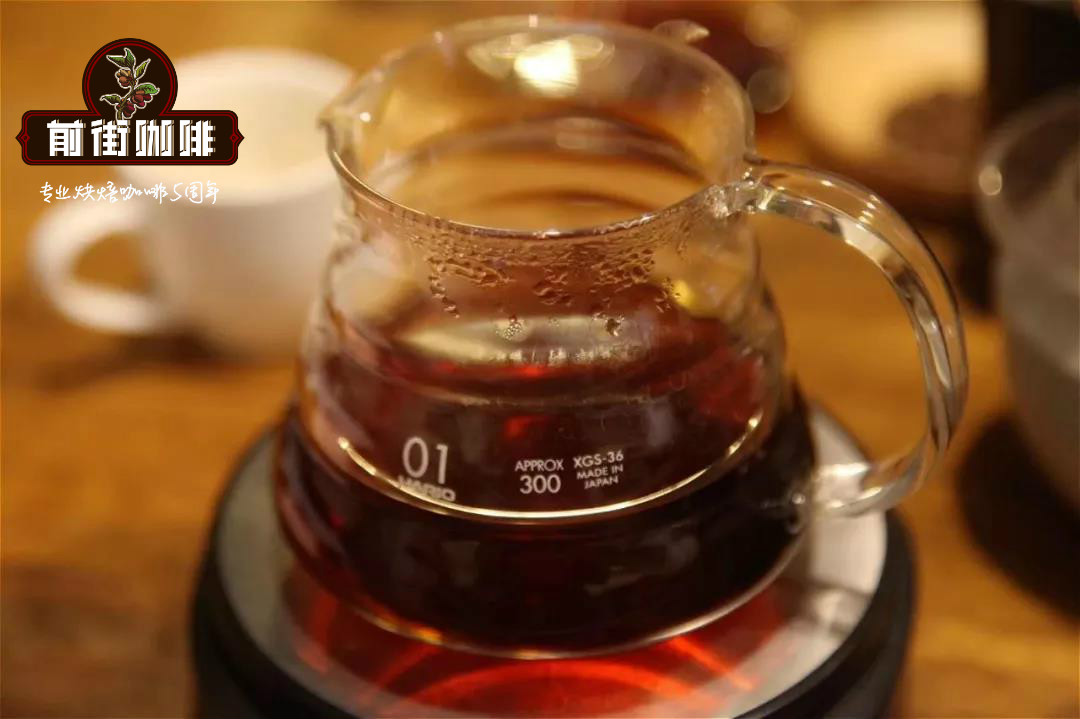How does the Costa Rican-Tarazu coffee treated with black honey feel?

Costa Rica is located in the Central American isthmus, latitude 10 °north, longitude 84 °west. It faces the Caribbean Sea to the east and the North Pacific Ocean to the west. Costa Rica is located in the volcanic belt of the low latitudes of Central America, the central plateau and mountains are about 800 to 2000 meters above sea level, suitable for coffee growth. Costa Rican coffee has always been famous for its well-balanced, clean, clear and berry-flavored fruit acid. Excellent Costa Rican coffee finishes with spicy and cocoa flavors. The most famous large planting area in the country is Tarrazu, which is near the capital San Jose.
Growth environment
Tara Zhu producing area has the highest average latitude and excellent climate and soil conditions, which makes Tarazhu the most famous and generally recognized coffee producing area in Costa Rica. Sanshui River (Tres Rios) is a famous small producing area in Tarazhu producing area. Boutique Coffee the most famous Costa Rican single estate coffee in the world is the La Minita estate in Tarazu District, which produces only 160000 pounds a year. The climatic conditions in Costa Rica are very different, completely subverting the classification of the four seasons of the year, there are only two seasons, April to December is winter, with a lot of rainfall, and from the end of December to April the following year is the dry season, also known as summer. The annual average temperature in San Jose, the capital, ranges from 15 ℃ to 26 ℃, while the temperature in the coastal areas is relatively high, with a night average temperature of 21 ℃ and a daily average temperature of 30 ℃ in the Caribbean.
The strict management of Laminita Farm in Tarazhu production area has established a world-class reputation and is popular in European and American markets for most of the century. It can be called a world-famous coffee farm. Lamini Tower means "small gold mine". Before the Spanish colonization, the Indians used to dig gold in the present farm location, which can be described as a blessed land. Raminita produces about 1 million pounds of coffee beans a year, and after selection to remove defects (more than 70% eliminated), only 290000 pounds of high-end products are sold to the boutique market, which is not a false name. The coffee of Gai Manor is famous for its sour aromas of apple and citrus, rich milk and truffle, and delicate taste of silk, about 1200-1700 meters above sea level. In addition, Sanhe District is also a famous producing area. The Yilazhu volcano and rivers not far to the east of the capital form an excellent microclimate zone, but in recent years, the urban area has gradually extended to the suburbs, and agricultural land has been sold to developers, resulting in a sharp decline in coffee production in Sanhe area. the output is almost half of which is contracted by Starbucks, and it is not easy for the industry to buy. Aquez Grass, a famous farm in this area, has been adhering to it since 1857. It has a long history, bright acidity, soft and unsharp fruit, nuts, flower-scented taffy and sweet fragrance, which is the characteristic of coffee in this area. Costa Rican coffee generally uses moderate roasting techniques to reflect the neutral acidity and aroma of coffee beans, and the coffee produced after roasting reflects the state of large grains.
Costa Rican Tarazu black honey treats high-quality very hard beans.
Producing area: Los Santos
Farm: LOS SANTOS
Variety: Caturra, Caruai
Treatment: black honey treatment
Altitude: 1700 meters Costa Rica Tarazhu black honey treated high-quality extremely hard beans
Los Santos producing area is located in the southeast of Costa Rica, 70 kilometers away from the capital San Jose.
Los Santos is one of the most biologically diverse regions in Costa Rica. The area is located in a basin facing the Pacific Ocean and can be affected by warm and humid air currents from the Pacific Ocean, resulting in an annual rainfall of 2400 mm and an average annual temperature of 19 °C. Although the highest elevation can reach 1900 meters, it will not go out.
Costa Rican Tarazu Black Honey treatment of Fine Grade very hard beans
Benefiting from the influence of the basin topography and warm and wet air flow, the Los Santos area has a high forest coverage. This is beneficial to the biodiversity and the protection of water sources in the basin. This ecological planting system is characterized by a variety of animals, plants, birds and insects, so it is known as the harmonious coexistence of biodiversity coffee ecological environment.
Unique climatic conditions, abundant precipitation and fertile volcanic ash soil, as well as geographical conditions grown in small valleys and hillsides, make Los Santos coffee highly appreciated by the most demanding international markets. Costa Rican Tarazu Black Honey treatment of Fine Grade very hard beans
Altitude and soil:
The coffee planting area is located between 1200 meters and 1900 meters above sea level. The soil type is mainly composed of volcanic ash deposits, which makes the acidity of the soil acidic. Most of the plantations in the area are planted in natural shade.
Costa Rican Tarazu Black Honey treatment of Fine Grade very hard beans
Harvest:
The harvest period is five months, from November to March of the following year. The harvest time coincides with the dry season, which ensures that coffee berries with uniform maturity and high quality can be harvested. The dry season provides conditions for sun treatment. Some raw beans are also treated in the sun.
The combination of altitude, climate and cultivated varieties makes the quality of coffee in the region highly recognized by the most demanding market in the world. High alcohol thickness, clean and consistent high acidity, rich and obvious aroma, and slightly chocolate aroma.
Costa Rican Tarazu Black Honey treatment of Fine Grade very hard beans
Coffee raw bean treatment-honey treatment. Honey treatment originated in Costa rica. to put it simply, honey treatment is a way to treat coffee with pectin and endocarp after the peel and flesh are removed. The key to distinguish between different honey treatments lies in the choice of the remaining pectin: retaining the proportion of pectin and drying speed and method.
Yellow honey (White Honey): about 40% of the pectin is removed; the drying method requires the most direct heat absorption, receives the most light drying, and lasts for about 8 days to reach a stable water content.
Red honey (Red Honey): about 25% of the pectin is removed; it dries longer than yellow honey, and reduces the time spent in direct sunlight, even in shading sheds, lasting about 12 days.
Black honey (Black Honey): hardly removes pectin; dries for the longest time, lasting at least 2 weeks, using a covering to avoid too strong sunlight, prevent drying too fast, and make sugar conversion more fully.
Costa Rican Tarazu Black Honey treatment of Fine Grade very hard beans
Flavor description:
Cantaloupe, durian, cranberry, rich grape juice, red wine, orange, pineapple, and other tropical strong fruit bombs, rich jujube tea.
Important Notice :
前街咖啡 FrontStreet Coffee has moved to new addredd:
FrontStreet Coffee Address: 315,Donghua East Road,GuangZhou
Tel:020 38364473
- Prev

What is the Brazilian Palma Cup? What kind of Brazilian Santos coffee do you have? The characteristics of Santos, Brazil?
Professional coffee knowledge exchange more coffee bean information please follow the coffee workshop (Wechat official account cafe_style) Brazilian coffee is called Brazils to distinguish it from Milds coffee. The vast majority of Brazilian coffee is unwashed and sun-dried and is classified according to the name of the state of origin and the port of transport. Brazil has 21 states and 17 states produce coffee, but four of them produce the most coffee.
- Next

What is Panama 90+ Rose Coffee? NPGE Coffee Plantation What are the coffee varieties
Professional coffee knowledge exchange More coffee bean information Please pay attention to Coffee Workshop (Weixin Official Accounts cafe_style) About 90+ Ninety Plus (90+)+Gesha=Ninety Plus Gesha Estate (NPGE) 90+: Gesha (Geisha, Geisha Coffee Bean): Among the world's top ten precious coffee beans, the most popular in recent years
Related
- Detailed explanation of Jadeite planting Land in Panamanian Jadeite Manor introduction to the grading system of Jadeite competitive bidding, Red bid, Green bid and Rose Summer
- Story of Coffee planting in Brenka region of Costa Rica Stonehenge Manor anaerobic heavy honey treatment of flavor mouth
- What's on the barrel of Blue Mountain Coffee beans?
- Can American coffee also pull flowers? How to use hot American style to pull out a good-looking pattern?
- Can you make a cold extract with coffee beans? What is the right proportion for cold-extracted coffee formula?
- Indonesian PWN Gold Mandrine Coffee Origin Features Flavor How to Chong? Mandolin coffee is American.
- A brief introduction to the flavor characteristics of Brazilian yellow bourbon coffee beans
- What is the effect of different water quality on the flavor of cold-extracted coffee? What kind of water is best for brewing coffee?
- Why do you think of Rose Summer whenever you mention Panamanian coffee?
- Introduction to the characteristics of authentic blue mountain coffee bean producing areas? What is the CIB Coffee Authority in Jamaica?

